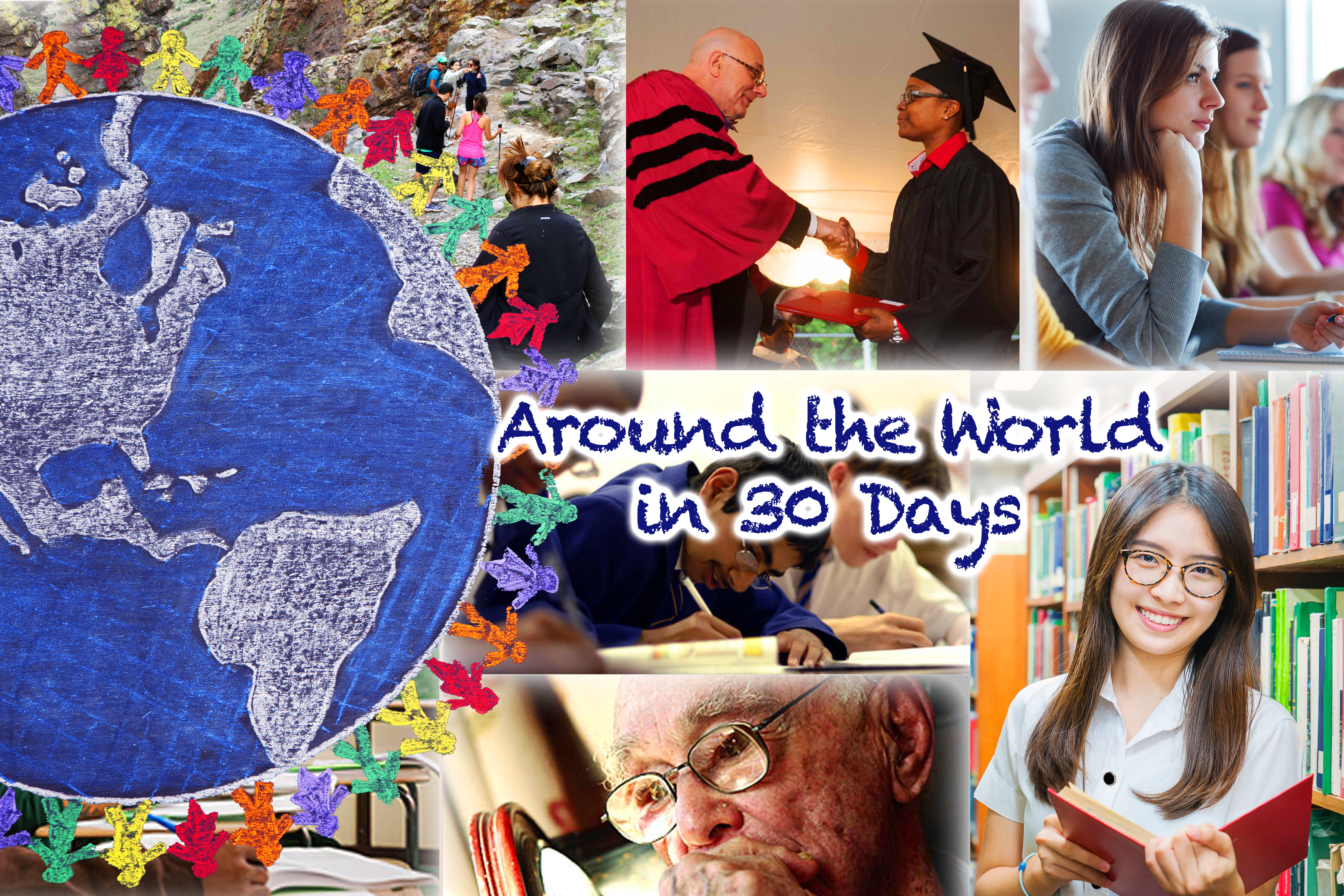
How do the admissions decision makers in U.S. Higher Education institutions decide which international graduate students get in? Is the process fair? How do the metrics used to assess Chinese applicants differ than those used to assess American students? Despite the fact that international students have driven the rising applications, enrollment and degrees awarded in US graduate education the practices and policies related to candidate selection have not received much media attention to date. Julie Posselt’s new book, 大学院入試のメリット内部, 多様性, そして、学部門番 (Harvard University Press Jan 2016), aims to change that by giving us a revealing behind the scenes look at the people who decide who gets in.
教育のためのグローバル検索 welcomes Julie Posselt. In my interview with Julie, she discusses the ambiguities surrounding the admissions review process for students based on her firsthand observations and interviews with admissions faculty in ten top-ranked US institutions – どのような彼女が学び、どのような彼女は、学生のレビューと評価を改善するために行われるお勧めします.
You reveal that some programs might have different GRE standards for applications from different regions. What might this tell us about the process of graduate admissions as a whole?
Admissions is cognitively, 専門的に, politically fraught work that often happens after hours because the days are full this time of year. As one philosopher in the study put it, “This is hard work. We are competent, intelligent people doing our best.”
I did find that faculty calibrates international students’ GRE scores using what they know about national cultures of test preparation. 多くは中国からの応募と仮定しました, 特に, 正式なテストの準備の多くを持っていただろう, 国の公務員試験の長い歴史と入学のためのガオ花王の強力な役割を今日与えられました. 結果として, they expected higher scores. To some degree, this is reasonable: students from China do have, 平均して, the highest GRE scores in the world.
When looking at American students’ ファイル, most professors didn’t similarly contextualize GRE scores according to the educational opportunities or barriers a student had experienced. More commonly, professors formally or informally set a single and very high GRE score and/or GPA threshold for the purposes of initial review. They would then leave it to individual professors to advocate for students who might fall below that threshold. This little set of routines constitutes a serious blind spot for equal opportunity due to the deep inequalities in K-12 and undergraduate education. Graduate programs receive applicants after at least sixteen years in an educational system that stratifies at every level.
One important thing that this highlights about admissions as a whole is that merit, as an idea and standard for admission, is not monolithic or fixed. I’m persuaded that merit has to be malleable.

Should the metrics used to assess International applicants be different than those used to assess American students?
Graduate programs don’t have separate tracks for international and US students, so in that respect, the metrics used to evaluate prospective students should not be different. しかしながら, professors understandably worry about possible language barriers for students whose first language is not English, and their worries are particularly acute in departments that rely on graduate students to teach undergraduates and/or support faculty research. The TOEFL, personal statement, and interviews provide additional information about English language skill.
What do test results not tell admissions officers about international students? How did the officers you interviewed describe the challenges they face when trying to assess a candidate from these countries holistically?
When I asked my interviewees a standard question about what makes admissions hard, the most frequent response was the challenge of “incomplete information.” Two common responses concerned their uncertainty about the quality of many colleges and universities outside the US and the extent of GRE preparation an applicant has received. When interpreting an international student’s GRE score, faculty reviewers frequently drew upon what they knew about the culture of test preparation in a country. It was not uncommon for them to consult with colleagues outside of the committee to learn more about the quality of education that a student was likely to have received at undergraduate institutions with which they were unfamiliar.

You claim that white males “dominate” in graduate admissions. What impact could this have on our higher learning institutions? Is this something we should seek to change?
White males were the majority on admissions committees because they comprise the faculty majority in most elite academic departments and elite colleges and universities. I firmly believe that people can learn to see beyond their own interests, become aware of subconscious biases, and stand together across the social identities that tend to separate us from each other. But there is also research evidence and common sense that we implicitly tend toward people like ourselves, and that many tend toward the comfort of what is known and familiar over anything that represents change. My research found several types of preference for sameness, and found that the process as a whole — even without reviewers specifically revealing obvious preference for whites or males as people — was stacked in favor of criteria that privileged whites and males.
I think everyone has to take responsibility for reducing implicit bias. I also think that admissions committee composition matters. In more diverse committees, and I don’t just mean diversity on gender and race here, professors corrected each other on outdated assumptions or potentially biased remarks. An increasingly popular way some departments are dealing with this in the short term, while we work to increase the diversity of the professoriate, is to involve current graduate students or program alumni in the admissions process.
Standardized tests have had a lot of negative press. From your research, were the admissions officers assessing applicants holistically?
I did not see much holistic review happening in the initial round of reviews. Many expressed concern that close reading at that point would be too time consuming. しかしながら, they did holistically review files of applicants who made the finalist list, or the “short list.” At this stage, they opened their eyes to the very minutiae in applications that their initial review tried to ignore. With their eye on the future of their discipline and department, they would try to divine evidence within the application of who might grow to become a leading scholar for their field.

What are the biggest obstacles in reforming the admissions practices of higher education institutions? Why is it so hard for them to make changes?
Inertia is a powerful force and, in the programs I observed, probably the primary obstacle to reforming admissions. The professors in my study and their departments were doing well by the standards of their fields, which made any change seem risky and unnecessary. Change also requires time and effort, two commodities they felt were in short supply.
A related barrier is that a commitment to collegiality–a true cornerstone of faculty culture– can ironically make professors averse to activities that might introduce disagreement. Change processes of any sort often require disagreement, and taking a fresh look at entrenched ideas about merit and diversity, 特に, can seem like a political minefield. Many preferred to avoid so-called “uncomfortable conversations” even if such conversations were what exactly what’s needed.
What would you recommend is done to improve assessment of international students in American Higher Education institutions?
My participants named specific things that would help them assess international students: 最初の, on college transcripts, they wanted to see international colleges and universities offer a conversion to the US four-point scale with which they are familiar.
Relatedly, I heard a common wish for letters of recommendation to be written in the same style that American letters are written. Reviewers might not love the effusive style of American letters, but when they received a more subdued letter from an international student, it was difficult to determine whether the subdued tone reflected less enthusiasm about the student on the part of the letter writer or a general cultural norm of writing more subdued letters about even top students.
そして最後に, more information about the extent of test preparation a student has received and about their fluency with English would help overcome skepticism that test scores from international students are less trustworthy signals of future academic performance.
As you can see, the pattern here is that professors want to strip away some of the variation that comes from culture and national origin to ease interpretation of international students’ files and compare them with American applicants.
(All Photos are courtesy of Shutterstock Prasit Rodphan/hxdbzxy/ukschools)

教育コミュニティページのためのグローバル検索
C言語. M. ルービンは彼女が受け取った2つの広く読まれているオンラインシリーズの著者である 2011 アプトン·シンクレア賞, “教育のためのグローバル検索” そして “私たちはどのように読み込みます?” 彼女はまた、3冊のベストセラーの著者である, 含めて 不思議の国のアリスリアル, の出版社です CMRubinWorld, そしてかく乱財団研究員である.
Cに従ってください. M. Twitterでルビン: www.twitter.com/@cmrubinworld






最近のコメント